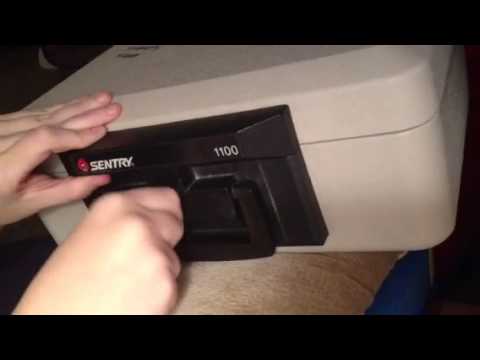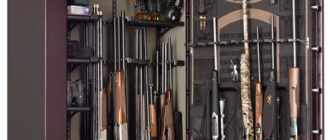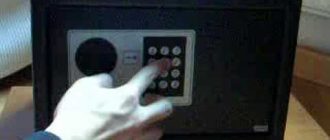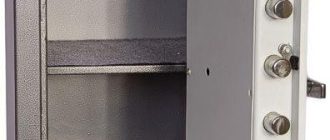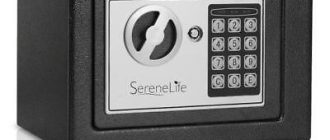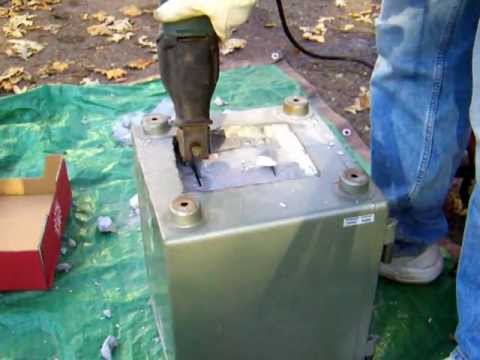
How Can I Open A Safe If I’ve Lost My Key
If you’ve ever found yourself in a position where you’ve lost the key to your safe, you know how frustrating it can be. Whether it’s a valuable item or important documents locked away, you need to regain access as soon as possible. But what can you do if you can’t find the key?
I’ve lost the key to my safe before, and I understand the stress and worry that comes with it. Fortunately, there are several methods you can try to open your safe without the key. While some may be more suitable for certain types of safes than others, it’s important to explore all your options.
If you’re in a pinch and need to open your safe quickly, one option is to contact a professional locksmith. These experts have the skills and tools necessary to open safes without damaging them. However, keep in mind that hiring a locksmith can be expensive and may not always be an immediate solution.
Another method you can try is to use a safe manipulation technique. This involves carefully manipulating the safe’s lock mechanism to open it without the key. While this method requires patience, practice, and a deep understanding of how safes work, it can be an effective way to regain access to your belongings.
In conclusion, losing the key to your safe can be a stressful situation, but there are several methods you can try to open it. Whether you choose to hire a locksmith or attempt safe manipulation yourself, the important thing is to be patient, persistent, and cautious. Remember to always prioritize safety and consider seeking professional help if needed.
Effective Methods for Opening a Safe Without a Key
If you’ve lost the key to your safe and need to access it, there are several methods you can try:
1. Retrieve the Spare Key: Check if you have a spare key hidden somewhere. Many people keep a spare key in a safe place in case their main key gets lost. Look for places such as a hidden compartment, a drawer, or even in a locked cabinet.
2. Contact the Manufacturer: If you’re unable to find the spare key or it’s not an option, try contacting the safes’ manufacturer. Provide them with the necessary information, such as the make and model of the safe, and they may be able to guide you on how to open it without the key.
3. Hire a Professional Locksmith: If the above methods haven’t been successful or if you lack the time and expertise to open the safe yourself, consider hiring a professional locksmith. They have the necessary tools and knowledge to open the safe without damaging it.
4. Use a Drill: This method should only be used as a last resort and if you’re willing to risk damaging the safe permanently. Drill a small hole near the lock and insert a thin, sturdy object, like a wire or paperclip, to unlock the mechanism. However, this method is not recommended for electronic or high-security safes.
5. Call a Safe Technician: Some safes come with a built-in mechanism that allows you to override the lock using a combination of keys or a special code. Look for any instructions or documentation that came with the safe, and if you find any, follow the steps to open the safe.
Remember to proceed with caution when attempting to open a safe without a key. It’s always best to consult with a professional to prevent any damage and ensure the safety of your belongings.
Using Lock Picking Tools
If you’ve lost the key to your safe and need to get it open, lock picking tools can be a great solution. Lock picking is a skill that requires practice and patience, but with the right tools and techniques, you can open a safe even if you’ve lost the key.
Before you begin, it’s important to note that attempting to pick a lock without proper authorization is illegal in many jurisdictions. Make sure you have the legal right to open the safe before proceeding.
If you’re comfortable with the legalities and want to learn how to use lock picking tools to open your safe, here’s how you can do it:
- Start by gathering the necessary tools. You’ll need a tension wrench and a lock pick set. These tools are available online or at specialty locksmith stores.
- Insert the tension wrench into the bottom of the keyway and apply slight pressure in the direction you would turn the key.
- Select a lock pick from your set that matches the type of lock you have on your safe. There are many different lock pick designs, so choose the one that best fits your needs.
- Insert the lock pick into the top of the keyway and begin to manipulate the pins inside the lock. Gently push up on each pin until you feel a slight click.
- Continue to manipulate each pin until all pins have clicked into place. Apply steady pressure with the tension wrench as you do this.
- Once all pins have clicked into place, continue to apply pressure with the tension wrench and turn it in the direction you would turn the key. If done correctly, the lock should open.
Keep in mind that lock picking takes time and practice to master. It’s important to be patient and persistent when attempting to open a safe with lock picking tools. If you’re having trouble or if the lock is particularly difficult, consider contacting a professional locksmith to avoid damaging the safe or the lock.
In conclusion, if you’ve lost the key to your safe, using lock picking tools can be an effective method to open it. Remember to follow the law and practice responsibly.
Employing a Key Impressioning Technique
If you’ve lost the key to your safe and need to open it, one effective method you can try is key impressioning. This technique involves creating a new working key by making an impression of the lock. While it may sound complex, with the right tools and patience, you can successfully open your safe using this method.
Here’s how you can employ a key impressioning technique to open your lost safe key:
| Step 1: | Gather the necessary tools, including a blank key, a file, a piece of soft wood, and a pair of pliers. |
| Step 2: | Insert the blank key into the lock and turn it as far as it will go without applying excessive force. |
| Step 3: | Slowly remove the key from the lock while paying attention to the marks left on it by the pins inside the lock. |
| Step 4: | Using the file, carefully file down the marks on the key, ensuring that you maintain the original shape and contours. |
| Step 5: | Repeat steps 2 to 4 several times, progressively filing down the key until it smoothly turns in the lock without any resistance. |
| Step 6: | Test the newly impressioned key by inserting it into the lock and turning it to open the safe. |
Note that key impressioning may not be successful in all cases, especially if the lock is complex or your skills as a locksmith are limited. If you encounter difficulties or are unsure about the process, it is recommended to seek professional assistance to avoid damaging your safe.
Applying Bypass Techniques
If you have lost the key to your safe and need to open it, there are techniques you can try to bypass the lock. However, it is important to note that these methods should only be used if you have legal ownership of the safe and have exhausted all other options.
1. Contact a Professional Locksmith: One of the safest and most reliable methods to open a safe is to hire a professional locksmith. They have the expertise and specialized tools necessary to open your safe without causing any damage to it.
2. Use a Magnet: If you suspect that the key to your safe is somewhere inside, you can try using a strong magnet to attract it. Move the magnet slowly along the exterior of the safe, paying attention to any magnetic resistance. If you encounter resistance, the key may be stuck to the inside of the safe door.
3. Try a Combination Reset: If your safe has a combination lock and you have forgotten the combination, you may be able to reset it. Look for a small hole or reset button on the back of the safe. Insert a thin, pointed object (such as a straightened paperclip) into the hole and press the button. This may reset the lock and allow you to enter a new combination.
4. Use a Drill: This method should only be used as a last resort and can potentially damage your safe beyond repair. If you are willing to take the risk, you can drill a small hole near the lock mechanism. This will allow you to access the internal components of the lock and manipulate them to open the safe. However, drilling a safe should only be done by professionals who have experience with this technique.
Remember, attempting to bypass a safe without proper knowledge and authorization can lead to damage or destruction of the safe and its contents. It is always advised to seek professional assistance if you find yourself in a situation where you have lost the key to your safe.
Utilizing Lock Decoding Methods
If you’ve lost the key to your safe and can’t open it, there are various lock decoding methods you can consider to gain access again. However, it’s important to note that these methods should only be used in situations where you have legal ownership of the safe.
One option for opening a safe when you’ve lost the key is lock impressioning. This method involves creating a new key by making an impression of the lock. To do this, you’ll need a blank key, specialized tools, and knowledge of the lock’s inner workings. By carefully manipulating the key and studying the marks left on it, you can create a duplicate key that should open the safe.
Another method to try is lock picking. This technique involves using specialized lock picking tools to manipulate the lock’s pins and mechanisms in order to open it. It requires skill and practice, so if you’re not experienced with lock picking, it’s best to leave it to a professional locksmith who can help you open the safe without causing damage.
Lock decoding using a locksmith scope is another potential option. With this method, a locksmith uses a specialized tool called a scope to examine the internal components of the lock and decode its combination or key code. This method can be effective for certain types of locks, but it also requires specialized knowledge and equipment.
If none of these methods work or you’re uncomfortable attempting them yourself, it’s best to seek the help of a professional locksmith. They have the expertise and specialized tools to open your safe safely and efficiently. Remember to provide proper documentation to prove ownership of the safe when calling a locksmith.
It’s important to note that attempting to open a safe without the key using these methods may cause damage to the lock or the safe itself. Therefore, it’s always recommended to consult with a professional before trying anything on your own.
Trying the Safe’s Default Combination
If you’ve lost the key to your safe and can’t open it, one method you can try is using the safe’s default combination. Many safes come with a preset combination that can be used to open the safe in case the key is lost. This default combination is usually provided by the manufacturer and can be found in the safe’s documentation.
To try the safe’s default combination, start by dialing the dial of the safe to the first number in the combination. Then, turn the dial clockwise, passing the second number once, and stop when the dial reaches the second number. Finally, turn the dial counterclockwise, passing the third number once, and stop when the dial reaches the third number.
It’s important to note that not all safes have a default combination, and even if they do, it may not be publicly available. However, it is worth trying the default combination if you’ve lost your key and can’t open the safe. If the default combination doesn’t work, you may need to consider other methods for opening the safe or seek professional help.
Exploring X-ray Scanning Techniques
When you’ve lost the key to your safe, you may wonder how you can regain access to your belongings. One possible solution is to use X-ray scanning techniques to help open the safe.
An X-ray scanner can provide valuable information about the internal components of the safe, including the location of the locking mechanism and any potential obstacles. By analyzing the X-ray images, you may be able to devise a strategy for opening the safe without the key.
It’s important to note that X-ray scanning techniques require expertise and specialized equipment. Therefore, it is advisable to seek the assistance of a professional locksmith or a company specializing in safe opening services. They will have the necessary skills and tools to leverage the power of X-ray scanning effectively.
During the X-ray scanning process, a technician will carefully position the safe and capture multiple X-ray images from different angles. These images will be examined in detail to identify potential weak points, such as gaps in the lock mechanism or areas where the safe may be susceptible to manipulation.
Based on the analysis of the X-ray images, the locksmith can then determine the most effective method for opening the safe. This may involve using specialized tools to manipulate the internal components or applying specific techniques to bypass the locking mechanism.
It’s crucial to understand that X-ray scanning techniques are not always a guaranteed solution for opening a safe. Some safes are designed with advanced security features that can resist X-ray examination. In such cases, alternative methods, like drilling or destruction, may be necessary.
If you’ve lost the key to your safe, it is recommended to consult a professional locksmith who can assess your specific situation and determine the most appropriate approach. They will have the knowledge and experience to determine if X-ray scanning techniques are suitable for your particular safe and provide you with the best chance of regaining access to your belongings without causing unnecessary damage.
| – X-ray scanning techniques can be used to open a safe when the key is lost. |
| – Professional locksmiths or safe opening services should be consulted for expertise. |
| – X-ray scanning involves capturing multiple images and analyzing weak points. |
| – Not all safes can be opened using X-ray scanning techniques. |
| – Consult a professional locksmith for the best way to open your safe. |
Using a Stethoscope to Listen for Clicks
If you’ve lost the key to your safe and need to open it, there are several methods you can try. One popular method is using a stethoscope to listen for clicks.
Here’s how you can open your safe using a stethoscope:
|
Step 1: |
Place the stethoscope’s earpieces in your ears and adjust them for a comfortable fit. |
|
Step 2: |
Hold the metal tube of the stethoscope against the safe’s dial or keypad. |
|
Step 3: |
Slowly turn the dial or enter the combination on the keypad, listening carefully for any clicks or sounds. |
|
Step 4: |
As you turn the dial or enter the combination, pay attention to the clicks you hear. These clicks indicate that the safe’s locking mechanism is moving. |
|
Step 5: |
Continue listening for clicks until you believe you have identified the correct combination. |
|
Step 6: |
Once you think you have the correct combination, slowly turn the dial to open the safe. If done correctly, the safe should open. |
|
Note: |
Keep in mind that using a stethoscope to open a safe can be a delicate process that requires patience and practice. It is recommended to consult with a professional locksmith if you are unsure or if you do not have experience with this method. |
Using a stethoscope to listen for clicks is just one method that you can try if you’ve lost the key to your safe. Remember to always follow safety guidelines and consult a professional if needed.
Employing Dry Ice to Freeze the Safe’s Lock
If you’ve lost the key to your safe and are unable to open it, one method you can try is using dry ice to freeze the lock. This technique can be effective in disabling the lock mechanism temporarily and allowing you to gain access to your safe.
To employ this method, you will first need to acquire dry ice from a local supplier or store. Ensure that you handle the dry ice with care and use protective gloves as it can cause burns upon direct contact with the skin.
Next, you will need to place small pieces of dry ice directly on the lock of the safe. As the dry ice evaporates, it will produce extremely cold temperatures that can cause the lock to contract and freeze. This freezing effect can help to weaken the lock mechanism and make it easier to manipulate.
After placing the dry ice on the lock, allow it some time to work its magic. Monitor the lock closely, and once you notice any sign of the lock freezing or becoming brittle, you can try to open it using a slim tool or a lock pick. Be patient and gentle with the lock, as using excessive force can damage it further.
If the dry ice method does not work or if you do not feel comfortable attempting it, it is always best to seek the help of a professional locksmith. They have the necessary skills and tools to open the safe without causing any damage.
Remember, attempting to open a safe without the key can be risky, and it is important to exercise caution to avoid damage to the safe or potential injury. Always consider consulting a professional if you are unsure about any method or technique.
Trying to Drill into the Lock
If you’ve lost the key to your safe and can’t open it, one method you can try is drilling into the lock. However, this should be your last resort as it can damage the lock and potentially make it more difficult to open the safe in the future.
Before attempting to drill into the lock, it’s important to understand that drilling can void any warranty on the safe, and it may also be illegal to drill into a safe without proper authorization. Make sure to check local laws and regulations before proceeding.
To drill into the lock, you will need a sturdy drill with a diamond or carbide-tipped drill bit. Start by marking the center of the lock with a marker or pencil. Then, slowly drill a small pilot hole in the center of the lock, applying steady pressure. Make sure to drill straight and avoid damaging any other parts of the safe.
Once you have the pilot hole, gradually increase the size of the drill bit, using slightly larger bits each time. Be patient and take breaks frequently to prevent overheating the drill bit. As you drill, always make sure to stay centered and avoid applying excessive force, as this can break the drill bit or cause other damage.
As you continue drilling, you may start to see metal shavings or feel the drill bit breaking through the lock mechanism. This indicates progress and means that you are getting closer to unlocking the safe. Keep drilling until you have successfully drilled through the lock.
After drilling through the lock, you should be able to open the safe using a screwdriver or other tool. However, keep in mind that drilling into the lock will likely render it useless, and it may need to be replaced entirely. It’s also important to note that drilling into a safe can be time-consuming and requires a certain level of skill and patience.
If you’re not comfortable or confident in your ability to drill into the lock, it’s best to contact a professional locksmith who can help open the safe without causing further damage. They have the knowledge and tools required to safely and efficiently open the safe, ensuring that you can regain access to your valuables without any complications.
Exploring Safe Manipulation Techniques
When you’ve lost the key to your safe, you may wonder how you can still open it. One option to consider is safe manipulation techniques. These techniques involve a careful and methodical approach to open a safe without the original key.
Safe manipulation can be a time-consuming process that requires patience, skill, and the right tools. It involves understanding the mechanical workings of the safe’s lock and using that knowledge to manipulate it effectively. Many professional locksmiths are trained in safe manipulation techniques and can assist you in opening your safe if you’ve lost the key.
One common method used in safe manipulation is known as dial manipulation. This technique involves a locksmith using a specialized tool called a manipulation stick to feel the internal components of the lock while turning the safe’s dial. By carefully listening and feeling for specific contact points and changes in resistance, the locksmith can determine the correct combination and open the safe.
Another technique used in safe manipulation is known as lock picking. This method involves using small tools, such as picks and tension wrenches, to manipulate the pins inside the lock. By applying pressure on the pins and carefully manipulating them, a locksmith can gradually unlock the safe without the original key.
It’s important to note that safe manipulation techniques should only be used by trained professionals. Attempting to manipulate a safe without the necessary knowledge and experience can cause damage to the lock and potentially make it more difficult to open. It’s always recommended to seek the assistance of a professional locksmith who is skilled in safe manipulation techniques if you’ve lost the key to your safe.
| 1. Non-destructive method: Safe manipulation techniques allow you to open your safe without causing any damage to the lock or the safe itself. |
| 2. Cost-effective: Instead of having to replace the lock or the entire safe, safe manipulation can be a more affordable option. |
| 3. Faster than other methods: While safe manipulation can take time, it is often faster than waiting for a replacement key or trying alternative methods. |
| 4. Preserves the contents of the safe: By opening the safe using manipulation techniques, you can access your valuables without causing any damage to them. |
In conclusion, safe manipulation techniques can be a viable solution when you’ve lost the key to your safe. It’s important to consult with a professional locksmith who is skilled in this area to ensure the safe is opened safely and without damage. Remember to always keep a spare key or consider a more secure method of storing it to avoid any future mishaps.
Using a Comb Pick Tool
If you’ve lost the key to your safe and need to open it, you can use a comb pick tool as an alternative method. This tool allows you to manipulate the pins inside the lock and open the safe without the original key.
| Step 1: | Insert the comb pick tool into the keyway of the safe lock. |
| Step 2: | Apply slight pressure to the tension wrench in the direction the key would normally turn. |
| Step 3: | Slowly insert the comb pick tool and start moving it up and down, feeling for the pins inside the lock. |
| Step 4: | As you feel each pin, use the comb pick tool to lift it to the correct height, as if you were using the key. |
| Step 5: | Continue moving the comb pick tool and lifting the pins until all the pins are set at the correct height. |
| Step 6: | Once all the pins are set, the lock will rotate and the safe will open. |
Using a comb pick tool requires skill and practice, and it may not work for all types of locks. If you are not confident in your abilities or if the lock is particularly complex, it is recommended to call a professional locksmith to open your safe.
Employing a Key Bumping Technique
To employ the key bumping technique, you will need a bump key that matches the type and model of your safe. Bump keys are altered keys designed to manipulate the lock pins and create a slight gap between them. This allows the lock to be easily turned and the safe to be opened.
Here’s how you can open your safe using the key bumping technique:
- Obtain a bump key that corresponds to your safe’s lock.
- Insert the bump key into the lock, making sure it is fully inserted.
- Apply slight pressure to the key while simultaneously tapping it with a small hammer or mallet. The goal is to jar the lock pins and create a bumping motion.
- Continue tapping the key while maintaining pressure until you feel the lock start to turn.
- Once the lock starts to turn, carefully rotate the key to fully unlock the safe.
It’s important to note that employing the key bumping technique should only be done if you have permission and legal rights to access the safe. Opening someone else’s safe without proper authorization is illegal and can result in serious consequences.
If you find yourself in a situation where you cannot open your safe using the key bumping technique or any other method, it’s best to seek the assistance of a professional locksmith. They have the skills and tools necessary to safely open the safe without causing any damage.
Seeking Professional Help from a Locksmith
If you’ve lost your key and can’t open your safe, don’t panic! In cases like these, it’s best to seek the assistance of a professional locksmith. Locksmiths are trained experts who specialize in opening locked safes and can help you regain access to your valuables.
When contacting a locksmith, explain the situation and let them know that you’ve lost the key to your safe. They will ask you for details about the safe, such as its brand and model, to determine the best course of action. It’s important to provide accurate information to ensure a smooth unlocking process.
A skilled locksmith will have the necessary tools and knowledge to open your safe without causing any damage. They may use methods such as lock picking, decoding the combination, or using specialized tools to manipulate the locking mechanism. This professional approach minimizes the risk of damaging your safe and ensures the security of your belongings.
Before hiring a locksmith, make sure to do some research and choose a reputable and reliable one. Look for highly-rated locksmiths in your area and check their credentials and certifications. Additionally, read reviews and testimonials from previous customers to get an idea of their expertise and customer satisfaction.
Keep in mind that seeking professional help from a locksmith may come at a cost. Locksmith services vary in price, depending on factors such as the complexity of the lock, the type of safe, and the time required to open it. It’s a good idea to inquire about the pricing beforehand to avoid any surprises.
In conclusion, if you’ve lost your key and can’t open your safe, it’s best to seek professional help from a locksmith. They have the necessary skills, tools, and knowledge to open your safe without causing damage. Remember to choose a reputable locksmith and be prepared for the cost of their services. With their assistance, you’ll be able to regain access to your safe and retrieve your valuable belongings.
Q&A:
What should I do if I’ve lost the key to my safe?
If you’ve lost the key to your safe, the best course of action is to contact a professional locksmith who specializes in safe openings. They have the necessary tools and expertise to safely open your safe without causing any damage.
Can I try to open the safe myself without a key?
It is not recommended to try to open a safe yourself without the proper knowledge and tools. Safes are designed to be secure, and attempting to open one without the key can potentially cause damage to the safe or even harm yourself. It’s best to leave it to the professionals.
How long does it usually take for a locksmith to open a safe without a key?
The time it takes for a locksmith to open a safe without a key can vary depending on several factors, such as the type of safe and its security features. In some cases, it can take as little as a few minutes, while more complex safes may take longer. It’s best to consult with the locksmith for an estimate based on your specific situation.
How much does it cost to open a safe without a key?
The cost of opening a safe without a key can vary depending on several factors, such as the type of safe, its security features, and the time and effort required to open it. It’s best to contact a professional locksmith and inquire about their pricing. They will usually provide you with an estimate based on your specific situation.

